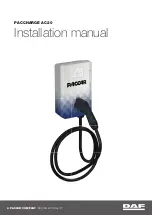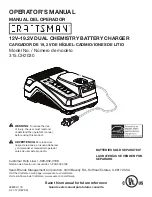
Installation of the EV Charger requires that you:
•
Calculate the existing electrical load to determine the
maximum operating current.
• Calculate the distance to ensure minimal voltage drop.
• Obtain any necessary permits from the local authority that has
jurisdiction and confirm that the follow-up inspection has been
scheduled by an electrician after the installation is complete.
• Use only copper conductors.
• Use conductors that are sized in accordance with local wiring
regulations. The selected cable must be able to sustain periods
of constant load of up to 40A.
• Use protective devices. The circuit protection device chosen
must incorporate a suitable residual-current device (RCD)
and over-current protection in relation to the electrical load
selected.
Choose the Best Location for the EV Charger:
• Determine the parking location of the vehicle to ensure that
the charge cable
will
reach the charge port.
• Determine the parking location of the vehicle to ensure
that the current charge cable reaches the charge port in an
enclosed garage, typically on the vehicle’s charge port side.
•
In a well-ventilated area. Avoid installation in an enclosed box,
or adjacent to hot appliances.
• 1.2m above the ground.
•
190mm from any obstacle to allow cable collected.
Note:
The
Amstel Dock
is approved for outdoor use. Protection from
rain is recommended but not required.
3. Preparation for Installation
3.1. Installation Requirements
3
Summary of Contents for Amstel Dock
Page 1: ...BPE Amstel Dock User Manual ...
Page 4: ...2 1 Datasheet 2 Specification 2 ...
Page 10: ......




























